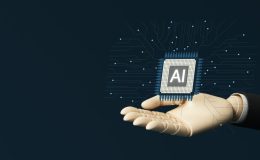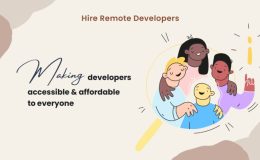Samsung’s annual developer conference also known as SDC, held at Moscone West in San Francisco has often focused on things like Tizen app development. However, this year, the company has also focused on a new topic, launching a new platform for IoT.

The Internet of Things (IoT) is a system of interrelated computing devices that are provided with unique identifiers and the ability to transfer data over a network without requiring human-to-human or human-to-computer interaction.
SmartThings Cloud
SmartThings Cloud a new ecosystem for Samsung’s IoT devices. Samsung will be uniting all the existing Samsung IoT services. These services include SmartThings, Samsung Connect, ARTIK, and Harman Ignite. To be frank, Samsung’s IoT offerings are kind of confusing because of its various platforms and services, and most of these services have overlapping functionality.

The SmartThings Cloud is a rebranding of Samsung’s IoT Services. It will become one of the largest ecosystems for IoT. It will provide an infrastructure for a connected consumer experience.
The SmartThings Cloud will useful to the developers if the rebranding means a proper reorganization of resources. It is said that the developers will have access all the resources under one cloud. Thus providing interoperability and services for businesses developing commercial and industrial IoT solutions.
Bixby 2.0 and its SDK
Bixby as Samsung’s answer to Apple’s Siri and Google Assistant. It will be available on a variety of devices. This includes the Samsung Smart TV and Family Hub refrigerator. It is also said that Bixby will now be the center of the consumer ecosystem.
Samsung’s Eui-Suk Chung says, “Bixby 2.0 is a bold reinvention of the platform. A reinvention aimed at transforming basic digital assistants from a novelty to an intelligence tool that is a key part of everyone’s daily life.”
Bixby 2.0 will also come with deep linking capabilities. The virtual assistant also has an enhanced natural language abilities. These abilities will help to better recognize users and create a predictive, personalized experience that better anticipate their needs.

Samsung is providing the tools to bring Bixby 2.0 into a wider number of applications and services, in order to build more powerful intelligent assistant platform. The Bixby SDK will be available to select developers, through a private beta program.
“At Samsung, we’re constantly innovating in order to deliver smarter, connected experiences for our consumers. Now we’re taking a big step forward with our open IoT platform, intelligent ecosystem and AR capabilities” said DJ Koh, President of Mobile Communications Business, Samsung Electronics. “Through an extensive open collaboration with our business partners and developers, we are unlocking a gateway to an expanded ecosystem of interconnected and intelligent services that will simplify and enrich everyday life for our consumers.”

Project Ambience
Samsung demonstrated its Project Ambience at SDC. It is a small dongle or chip that can be applied to a wide variety of objects. It allows them to connect seamlessly. Thus it helps to create a ubiquitous Bixby experience. This new concept reflects the next generation of IoT, that of the “Intelligence of Things,” which combines IoT and intelligence to make your life easier.
Samsung is one of the pioneers in the world of VR. Now, they are committed to advance technologies like AR too. Samsung is trying to bring in new technologies into the world where everything is networked and the seamless experiences that span across devices.
Together with Google, Samsung’s developers are able to use the ARCore SDK, which is bringing the Augmented Reality to the masses through Samsung Galaxy S8, Galaxy S8+, and Galaxy Note8. This strategic partnership with Google offers new business opportunities for developers and a new platform for creating immersive new experiences for consumers.





















